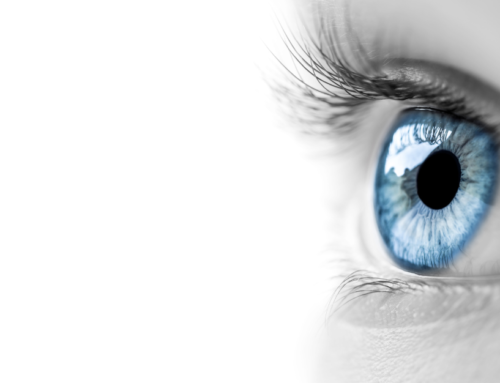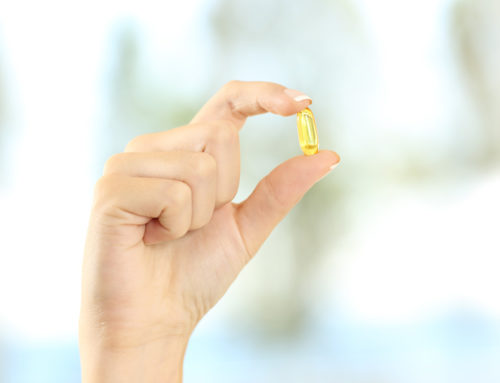Non-alcoholic fatty liver disease (NAFLD) is a general term for a range of conditions characterized by having excess fat deposits in your liver.
As the name implies, this liver condition occurs in people who drink little to no alcohol. However, many other lifestyle factors contribute to its development. NAFLD is surprisingly common: by some estimates, 17-30% of adults have NAFLD.
NAFLD can be sneaky. Initially, you might not experience any symptoms. By the time it’s diagnosed, your liver may start to develop some inflammation, and you may be at risk to develop non-alcoholic steatohepatitis (NASH), which, in turn, can lead to cirrhosis. That’s a big reason why it’s crucial to address NAFLD early.
What Are The Symptoms Of Non-Alcoholic Fatty Liver Disease?
The early signs of NAFLD can be subtle, and can often be ascribed to other things.
Common early symptoms include:
- Pain in the upper right abdomen
- Unexplained fatigue
- Muscle weakness
- Unintentional weight loss
NAFLD is typically diagnosed through blood tests that assess liver function, or through an ultrasound or liver biopsy.
What Causes Non-Alcoholic Fatty Liver Disease?
Unlike alcoholic fatty liver disease, which is directly tied to alcohol consumption, multiple factors can lead to NAFLD, and sometimes a direct cause can’t be determined. Some risk factors include:
- Excess weight: Research has found that obesity is one of the most common contributors to the development of NAFLD.
- Age: Your risk for NAFLD rises as you age. Alarmingly, childhood incidences of NAFLD have risen as childhood obesity becomes more common.
- Diabetes: The relationship between NAFLD and diabetes is a two-way street: having NAFLD raises your risk of diabetes complications, and diabetes increases the risk of NAFLD. However, the good news is that the lifestyle changes that help treat each condition will help both.
- Insulin resistance: The way your body metabolizes insulin is closely linked to your risk of NAFLD. In fact, up to 80% of people who are obese and diabetic have NAFLD.
- Cholesterol: Cholesterol is metabolized by your liver, and high cholesterol levels can lead to fatty deposits in the liver.
Thyroid problems: One study found that up to 36% of study participants with hypothyroidism also had NAFLD. - Sleep apnea: Studies have found that people with sleep apnea are more likely to have NAFLD, even when obesity – a risk factor for both – is accounted for.
- Polycystic ovary disease (PCOS): Many women with PCOS also have NAFLD. Again, excess weight is a factor for both conditions, and research suggests the high levels of androgen that characterize PCOS can also contribute to NAFLD.
Holistic Treatment Options For NAFLD
To date, there is no conventional medication that effectively treats NAFLD. However, addressing the root causes not only heals your liver but provides other health benefits as well.
The following tips can help prevent NAFLD and minimize any further damage to your liver.
1 – Lose weight
As you can see from the list of possible causes, excess weight greatly increases your risk of developing NAFLD. Of course, losing extra pounds is always easier said than done. It’s important to develop a realistic, healthy approach to losing weight that you can sustain for the long run.
2 – Supplement smartly
Some initial research suggests that vitamin E helps protect the liver. Other supplements with promising results in studies include curcumin, vitamin D, omega-3, and berberine. As always, work with your healthcare practitioner to determine the right approach for you. We would be happy to help – click here to schedule a free clarity call.
3 – Eat a balanced diet
Focus on whole foods, including whole grains, lean protein, and fresh produce. The Mediterranean diet, which emphasizes fish, vegetables, healthy fats, nuts, and olive oil over heavily processed foods, has been proven to help with NAFLD. As well, try to eliminate sugar as much as possible. Reducing sugar is one of the most important steps to avoid NAFLD.
4 – Maintain a healthy microbiome
Gut bacteria play a powerful role in how your liver metabolizes fat. Maintain a healthy biome in your gut by eating high-fiber foods and fermented foods like sauerkraut and kefir, and supplementing with probiotics as needed.
5 – Move!
In addition to helping with weight maintenance, exercise improves insulin resistance and fatty acid metabolism in your liver. A combination of steady-state cardio, weight training, and high-intensity intervals is ideal, but it’s important to develop a sustainable program that works for you.
Take steps now to address your liver health! If you’re experiencing symptoms of NAFLD, or want to be proactive in keeping your liver in shape, we can work together to implement a plan.
Sources:
- Kneeman JM, Misdraji J, Corey KE. Secondary causes of nonalcoholic fatty liver disease. Therap Adv Gastroenterol. 2012 May;5(3):199-207. doi: 10.1177/1756283X11430859. PMID: 22570680; PMCID: PMC3342568.
- Chung GE, Kim D, Kim W, Yim JY, Park MJ, Kim YJ, Yoon JH, Lee HS. Non-alcoholic fatty liver disease across the spectrum of hypothyroidism. J Hepatol. 2012 Jul;57(1):150-6. doi: 10.1016/j.jhep.2012.02.027. Epub 2012 Mar 14. PMID: 22425701.
- Chung GE, Kim D, Kim W et al. Non-alcoholic fatty liver disease across the spectrum of hypothyroidism. J Hepatol [published online ahead of print March 13, 2012]. http://www.ncbi.nlm.nih.gov/pubmed/22425701
- Mesarwi OA, Loomba R, Malhotra A. Obstructive Sleep Apnea, Hypoxia, and Nonalcoholic Fatty Liver Disease. Am J Respir Crit Care Med. 2019 Apr 1;199(7):830-841. doi: 10.1164/rccm.201806-1109TR. PMID: 30422676; PMCID: PMC6835083.
- Hazlehurst JM, Woods C, Marjot T, Cobbold JF, Tomlinson JW. Non-alcoholic fatty liver disease and diabetes. Metabolism. 2016 Aug;65(8):1096-108. doi: 10.1016/j.metabol.2016.01.001. Epub 2016 Jan 11. PMID: 26856933; PMCID: PMC4943559.
- Kitade H, Chen G, Ni Y, Ota T. Nonalcoholic Fatty Liver Disease and Insulin Resistance: New Insights and Potential New Treatments. Nutrients. 2017 Apr 14;9(4):387. doi: 10.3390/nu9040387. PMID: 28420094; PMCID: PMC5409726.
- Vassilatou E. Nonalcoholic fatty liver disease and polycystic ovary syndrome. World J Gastroenterol. 2014 Jul 14;20(26):8351-63. doi: 10.3748/wjg.v20.i26.8351. PMID: 25024594; PMCID: PMC4093689.
- Usman M, Bakhtawar N. Vitamin E as an Adjuvant Treatment for Non-alcoholic Fatty Liver Disease in Adults: A Systematic Review of Randomized Controlled Trials. Cureus. 2020 Jul 6;12(7):e9018. doi: 10.7759/cureus.9018. PMID: 32775098; PMCID: PMC7405968.
- Zelber-Sagi S, Salomone F, Mlynarsky L. The Mediterranean dietary pattern as the diet of choice for non-alcoholic fatty liver disease: Evidence and plausible mechanisms. Liver Int. 2017 Jul;37(7):936-949. doi: 10.1111/liv.13435. Epub 2017 Jun 1. PMID: 28371239
- Campo L, Eiseler S, Apfel T, Pyrsopoulos N. Fatty Liver Disease and Gut Microbiota: A Comprehensive Update. J Clin Transl Hepatol. 2019 Mar 28;7(1):56-60. doi: 10.14218/JCTH.2018.00008. Epub 2018 Dec 28. PMID: 30944821; PMCID: PMC6441642.
- Jensen T, Abdelmalek MF, Sullivan S, Nadeau KJ, Green M, Roncal C, Nakagawa T, Kuwabara M, Sato Y, Kang DH, Tolan DR, Sanchez-Lozada LG, Rosen HR, Lanaspa MA, Diehl AM, Johnson RJ. Fructose and sugar: A major mediator of non-alcoholic fatty liver disease. J Hepatol. 2018 May;68(5):1063-1075. doi: 10.1016/j.jhep.2018.01.019. Epub 2018 Feb 2. PMID: 29408694; PMCID:
- van der Windt DJ, Sud V, Zhang H, Tsung A, Huang H. The Effects of Physical Exercise on Fatty Liver Disease. Gene Expr. 2018 May 18;18(2):89-101. doi: 10.3727/105221617X15124844266408. Epub 2017 Dec 6. PMID: 29212576; PMCID: PMC5954622.





